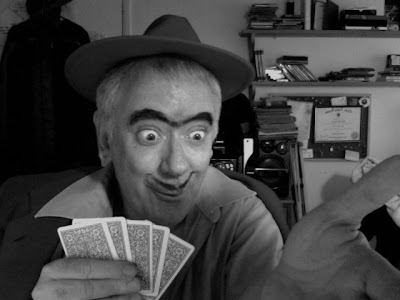I know I said I wouldn't post anything til Monday but it occurred to me that since everybody's in San Diego at the Con I can do something completely stupid and self-indulgent and no one will ever know. OK...so here's a quick post about my daughter's bucket of filth. It's something so personal that it would interest only me but, hey... I'm the only one reading this!
Today I discovered a cardboard box in the garage that appeared to be full of knick-knacks that my kid owned when she was seven. I blew off the dust and there it was, a real time capsule from my daughter's youth. I waited for her to come home and we opened it together. There in the middle of the box, surrounded by old pens, sock puppets and diaries, was a real seven year-old's bucket of filth (John K's term) contained in an instant coffee jar.
With infinite caution my daughter opened the jar and smelled the brown liquid inside. No, no...I know what you're thinking, and it wasn't that. No, it was something weirder; you could tell what it was from the smell: ketchup, soy sauce, dirt, turpentine, chili powder, hot sauce, powdered toothpaste and English Leather cologne. SO THAT'S WHAT HAPPENED TO MY ENGLISH LEATHER!!!!!! I got that as a present and never got to try it out. It mysteriously disappeared!
I asked my kid what the concoction was for and she replied matter-of-factly that it was meant to resurrect witches. As witches are want to do, before they step into the fiery lava that will end their reign of evil, they turn to the nearest kid and describe the chemical that has the power to resurrect them. It's a heavy thing to be trusted with a formula like that, and she went through much soul-searching about the ethics of bringing witches back to life, but the lure of science proved irresistible.
Also in the box was an old tee shirt, the one she was always putting on the dogs. If the dogs were nice guys and accepted the cumbersome tee shirt they were rewarded with having their back legs tied together with scarves.
There were also diaries full of misspelled complaints about friends who snubbed her and long multiplication problems like a hundred trillion times eleven. It also looked like she was at work on a personal written language that looked like what you see on Celtic rune stones.
OK, enough personal stuff! On Monday we'll return to solving the world's problems.















































